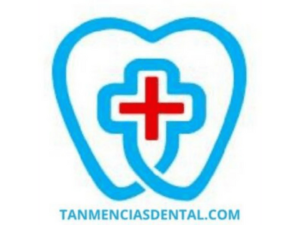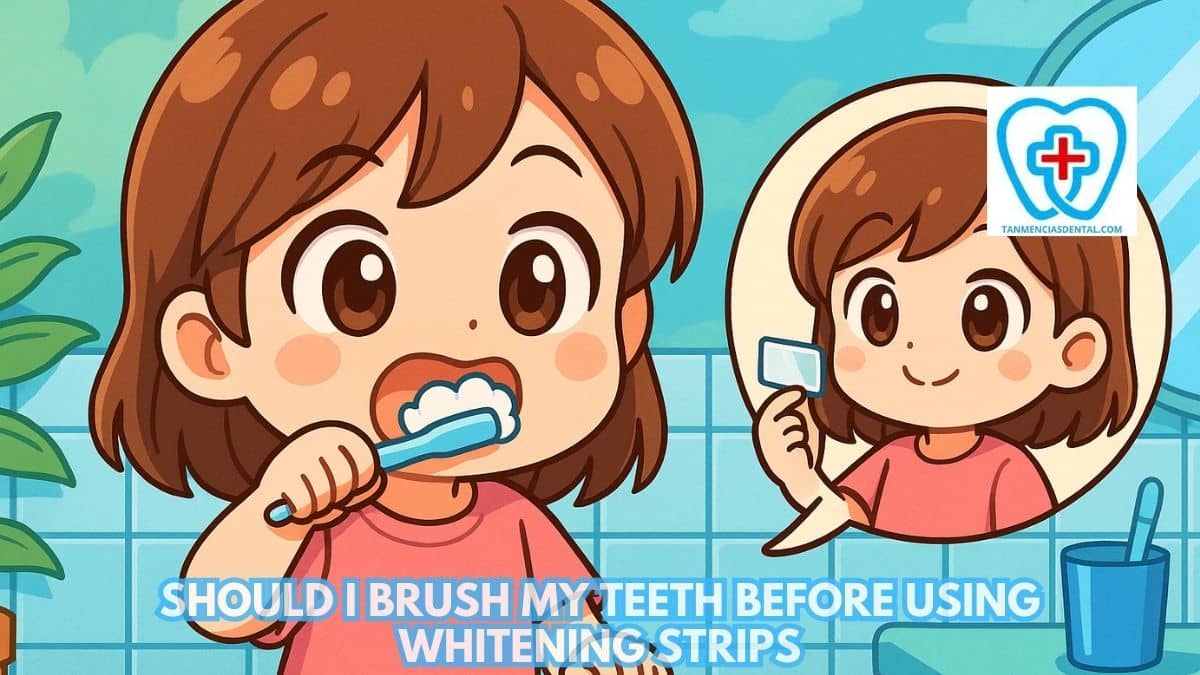Many people ask the question, “Should I brush my teeth before using whitening strips?”
Whitening strips can improve the look of your smile, but how you prepare your teeth affects the results.
Brushing too soon or too hard before applying strips may lead to gum irritation or enamel sensitivity.
On the other hand, applying strips to teeth that are not clean can reduce their effectiveness.
We’ll break down what you should do before and after using whitening strips to keep your teeth safe and achieve good results.
1. Removing Surface Debris Before Application
Food particles, plaque, and other buildup can prevent whitening strips from sticking well.
If these remain on your teeth, the whitening gel may not spread evenly, which can cause patchy results.
A light cleaning, either by rinsing or gentle brushing, helps create a smoother surface.
This makes it easier for the strips to stay in place during the recommended wear time.
A clean mouth also feels fresher and reduces the risk of bacteria being trapped under the strips.
🦷 Should You Brush Your Teeth After Whitening Strips? Here’s the Answer
2. Using a Soft-Bristled Toothbrush And Fluoride Toothpaste
A soft-bristled toothbrush is gentle enough to clean your teeth without putting too much pressure on your gums.
Using hard bristles may wear down enamel and make gums more sensitive, which is not ideal before whitening.
Fluoride toothpaste helps strengthen enamel and lowers the risk of cavities while keeping your teeth in good condition.
When brushing your teeth before applying whitening strips, a soft brush and fluoride toothpaste create a healthy surface for treatment.
This preparation also ensures that the whitening agent from the strips can make even contact with your teeth.
By cleaning thoroughly yet gently, you lower the chance of irritation while improving the results of whitening.
Together, these steps provide a safe and effective way to care for your teeth before whitening treatments.
🦷 Why Do You Still Have a Bad Taste in Your Mouth After Brushing?
3. Waiting 20-30 Minutes After Brushing Before Strips
When you brush, the enamel on your teeth can soften slightly, and your gums may feel more exposed.
If you place whitening strips right away, the whitening agent can reach the sensitive areas and make your teeth feel sore.
This is why waiting 20 to 30 minutes after brushing before applying strips is often recommended.
The pause allows your mouth to return to its normal condition and helps balance saliva levels.
It also ensures that any leftover toothpaste is gone, which prevents it from blocking the whitening gel.
Many people wonder if they should brush before or after using whitening strips, but the key is to time it so the enamel is not stressed.
Brushing before applying strips can be safe if done gently and followed by a short waiting period.
Taking this approach makes it easier to care for your teeth before or after using whitening products without added irritation.
🦷 How Often Should You Brush Your Teeth With Braces to Prevent Cavities?
4. Avoiding Aggressive Brushing Before Use
Scrubbing too hard with a toothbrush before whitening strips can damage enamel.
It can also make gums tender, which may lead to stinging once the strips are applied.
Gentle brushing is enough to clean without causing these problems.
Paying attention to pressure while brushing can protect your teeth and gums long-term.
Preparing in this careful way supports both comfort and effectiveness during whitening.
🦷 How the Right Diet for Gingivitis Can Improve Gum Health
5. Ensuring Clean Teeth For Strip Adhesion
Whitening strips work best when they make complete contact with the surface of each tooth.
If food particles, plaque, or other buildup remain, the strips may not stay in place as they should.
This can cause uneven results that make some areas look lighter than others.
Before you apply the strips, it is important to brush gently or rinse so that your teeth are free of debris.
A clean surface ensures that the adhesive sticks properly and holds the strip in place for the full treatment time.
When using whitestrips, an even fit also helps the whitening agent spread consistently across your teeth.
This step is especially important if you want to maximize the benefits of teeth whitening at home.
By preparing your teeth carefully, you give the strips the best chance to deliver safe and noticeable results.
🦷 Can Mouthwash Help a Sore Throat? What You Need to Know
6. Waiting 30 Minutes Before Brushing After Strips
After using whitening strips, teeth may be more sensitive for a short period.
Brushing right away can irritate enamel and cause gum discomfort.
Waiting at least 30 minutes gives your teeth time to recover.
This short pause helps protect enamel from unnecessary wear.
It also allows saliva to naturally wash away leftover whitening gel.
🦷 Best Toothpaste for Plaque and Gingivitis That Really Works
7. Using Sensitive Toothpaste And a Soft Brush After Application
Some people experience mild tooth or gum sensitivity after whitening treatments.
Using toothpaste made for sensitive teeth helps ease this discomfort and keeps enamel protected.
A soft-bristled toothbrush removes plaque gently without causing extra wear on teeth or gums.
This is especially helpful when brushing after using whitening strips, since your teeth may be more delicate.
It is also important to remove any residual gel left behind, which can sometimes irritate your mouth if not cleaned properly.
Together, these steps make post-treatment care safer and reduce the chance of ongoing sensitivity.
They also keep your teeth clean and healthy while supporting the overall success of the whitening process.
🦷 Are Electric Toothbrushes Safe for Kids and Adults? What Dentists Say
8. Rinsing Mouth Before Brushing Post-Strip Use
Once you remove the strips, there may be leftover gel on your teeth.
Rinsing with water first helps clear away these remains without extra friction.
This step prepares your mouth for brushing later without discomfort.
It also ensures you are not brushing whitening residue deeper into your enamel.
A simple rinse supports cleaner and safer aftercare.
🦷 Do Electric Toothbrushes Damage Fillings? The Facts You Should Know
9. Maintaining a Regular Oral Hygiene Routine
Whitening strips should not replace brushing and flossing.
A steady routine of oral care keeps your teeth healthy and less prone to staining.
Brushing twice daily and flossing once a day helps protect enamel.
Healthy teeth respond better to whitening treatments and keep results longer.
Consistent care is the foundation for both appearance and dental health.
🦷 Dental Diagnostics In Marikina
10. Following Manufacturer Instructions And Consulting Dentists
Each whitening strip brand may provide slightly different steps for safe and effective use.
Reading and carefully following the instructions provided helps prevent mistakes and lowers the risk of tooth or gum irritation.
Not every product has the same wear time or strength, so checking the directions before starting is important.
If you are uncertain about how to use a product, a dental professional can guide you and suggest what is best for your teeth.
Dentists can also spot issues like cavities or gum disease that might make whitening unsafe at the moment.
This extra step ensures you are not only whitening but also protecting your long-term dental health.
By combining the instructions provided with advice from a dental professional, you create a safe and reliable routine for whitening at home.
🦷 Your Family Dentists in Marikina City
👨⚕️ Conclusion
So, should I brush my teeth before using whitening strips?
Yes, but it is important to brush gently and time it well to avoid irritation.
Waiting before and after application helps protect enamel and comfort.
Rinsing, using sensitive toothpaste, and keeping a daily care routine all make the process safer.
With the right approach, you can achieve brighter teeth without harming your oral health.
😊 Self-Promotion
Visit us at Tan-Mencias Dental Clinic, located at 44 G. Del Pilar Street, Parang, Marikina City, where we are ready to care for your smile.
Our friendly team is here to help you with checkups, treatments, and all your dental needs.
You can call us at 0917-145-1074, send a message through our Facebook page, or reach us through the contact form on our website for any questions or concerns.
We make it easy for you to connect with us in the way that works best for you.
Let us help you keep your teeth healthy and your smile bright.
❔ FAQs
1. Can I use whitening strips every day?
Most whitening strips are not meant for daily use unless the instructions say so.
Overuse can lead to tooth sensitivity and gum irritation.
It is best to follow the schedule on the product label to avoid harming your enamel.
If you want to whiten your teeth more often, talk to your dentist first.
They can guide you on what is safe for your teeth.
2. What should I avoid eating or drinking after using whitening strips?
After whitening, your teeth can be more open to staining for a short time.
It is best to avoid coffee, tea, red wine, or dark-colored sauces right after treatment.
Acidic foods like citrus fruits can also cause discomfort if your teeth are sensitive.
Stick to water and lighter-colored foods during this period.
This helps your results last longer.
3. Are whitening strips safe for everyone?
Whitening strips are safe for most people with healthy teeth and gums.
They should not be used if you have untreated cavities, gum disease, or very sensitive teeth.
Children and pregnant women are usually advised not to use them.
People with dental restorations like crowns or veneers may not see results, since whitening strips only work on natural teeth.
A dentist can check if whitening is right for you.
4. What should I do if my gums feel sore after using whitening strips?
If your gums feel sore, give your teeth a break before using the strips again.
Try brushing with toothpaste made for sensitive teeth to ease discomfort.
Make sure the strips are placed only on your teeth and not covering your gums.
Shortening the wear time may also help.
If soreness continues, stop using the strips and see your dentist.
5. How long do whitening strip results usually last?
The results from whitening strips can last from a few months to a year, depending on your habits.
Drinking coffee, tea, or soda often may shorten how long your teeth stay bright.
Brushing and flossing every day helps keep your smile whiter longer.
Regular dental cleanings also support lasting results.
For the best outcome, combine whitening strips with good daily care.

